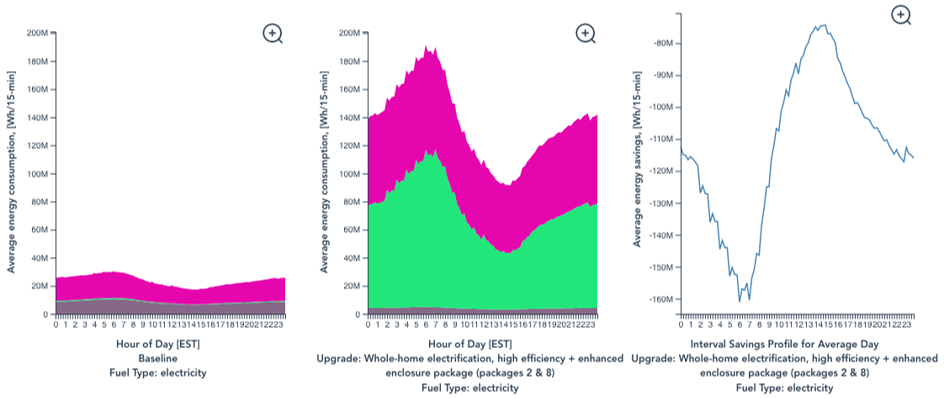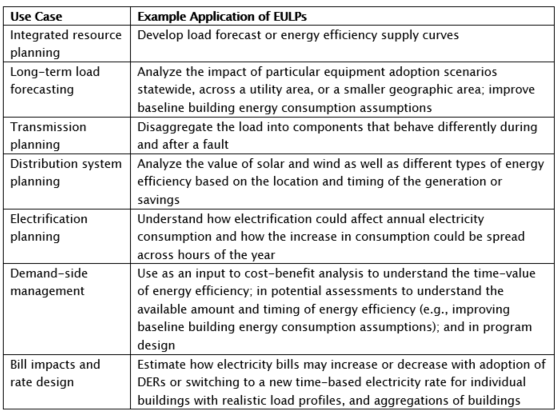Posted by Johann Nacario — February 7, 2023 — Until recently, publicly available information was limited for two key factors that determine the value of energy efficiency and other distributed resources (DERs): (1) end-use load profiles (EULPs), which quantify how and when electricity is used, and (2) savings shapes, which measure the difference between the hourly use of electricity in the baseline condition and the hourly use post-installation of the energy efficiency measure.
EULPs and savings shapes are critically important to utilities, public utility commissions, state energy offices and stakeholders to better value distributed energy resources in utility resource planning, state and local energy planning, and programs.
To fill this data gap, the U.S. Department of Energy supported the development of publicly available, calibrated, validated, and spatially and temporally resolved EULPs and savings shapes that are representative of the U.S. building stock. The foundational dataset can be accessed using three options — aggregates, web viewer, and individual models — and has many applications.
To assist users, Berkeley Lab released a new report that provides practical guidance on accessing the EULPs and savings shapes, and common uses. The End-Use Load Profiles for the U.S. Building Stock: Practical Guidance on Accessing and Using the Data report first describes three options for accessing the EULPs and savings shapes and considerations for determining which option is best suited for a particular application (see example of the web viewer and savings shapes in Figure 1).

The report then identifies seven common use cases for the EULPs and savings shapes and provides illustrative applications (Table 1).

The report authors are Margaret Pigman and Natalie Mims Frick in Berkeley Lab’s Electricity Markets and Policy Department, and Eric Wilson, Andrew Parker and Elaina Present, NREL. The Building Technologies Office of the U.S. Department of Energy’s Office of Energy Efficiency and Renewable Energy supported this work.
The EULPs and savings shapes and the End-Use Load Profiles for the U.S. Building Stock: Practical Guidance on Accessing and Using the Data report are available from Berkeley Lab.




